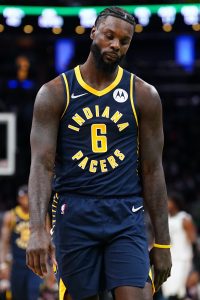With the NBA’s February 10 trade deadline around the corner, we’re taking a closer look at all 30 teams, breaking down their potential plans for the deadline and identifying their most likely trade candidates. We’re focusing today on the Pacific Division.
Golden State Warriors
Trade deadline goals:
Few, if any, NBA teams should feel less urgency to make a move at the trade deadline than Golden State.
The Warriors already benefited from one major in-season “addition” when Klay Thompson returned to action last month for the first time since 2019. James Wiseman could be a second one if he’s able to make it back in the second half from a pair of knee surgeries.
While rival teams may try to pry away young Warriors prospects like Wiseman, Jonathan Kuminga, or Moses Moody, the Dubs have shown no inclination to mortgage their future for short-term gains. They’ve gone 40-13 this season without ever really being fully healthy — as long as they have all their guys available heading into the postseason, there’s no obvious weak spot on the roster.
Having said that, health is certainly a wild card worth considering. If they’re at all nervous about Draymond Green‘s ability to be back to 100% this spring, the Warriors could peruse the market for a frontcourt fill-in.
Top trade candidates:
One reason why the Warriors seem unlikely to make a trade is that their roster lacks expendable players. A team with the NBA’s second-best record won’t feel compelled to break up its starting lineup, and many of Golden State’s low-priced role players – such as Otto Porter, Damion Lee, and Gary Payton II – are outplaying their contracts and will be retained.
Perhaps a player like Juan Toscano-Anderson or Nemanja Bjelica could be moved in the right deal, but even those guys are probably more valuable the Warriors could get back for them on their own.
For what it’s worth, the Warriors’ success this season means they could safely move their unprotected 2022 second-round pick without worrying about losing a top-20 selection. I’m skeptical they’ll feel compelled to do so, but it’s an option.
Los Angeles Clippers
Trade deadline goals:
Entering February, we didn’t have a clear picture of what the Clippers would try to do at the trade deadline. Kawhi Leonard and Paul George were out indefinitely, but there was no incentive for the team to tank this season, since Oklahoma City owns L.A.’s first-round pick.
We got our answer on the Clippers’ deadline plans on Friday, when they traded Eric Bledsoe, Justise Winslow, Keon Johnson, and a second-round pick to Portland for Norman Powell and Robert Covington. Powell is under contract for several years beyond this one, but Covington is on an expiring deal, so Los Angeles isn’t just looking to the future — the team wants to stay competitive this season, whether or not Leonard and George return.
Having already made one big move, the Clippers may be content to stand pat this week, but I expect them to remain engaged in trade talks for the next few days. They’re still in the market for a play-maker who can set up their stars and who is also comfortable playing off the ball and making open shots.
Top trade candidates:
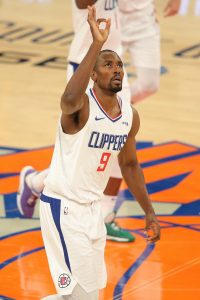 Serge Ibaka is on an expiring contract, he has battled injury problems, and his playing time has been inconsistent this season even when he’s been healthy. The big man, who has a $9.7MM cap hit, looks like the Clippers’ best remaining candidate to be dealt.
Serge Ibaka is on an expiring contract, he has battled injury problems, and his playing time has been inconsistent this season even when he’s been healthy. The big man, who has a $9.7MM cap hit, looks like the Clippers’ best remaining candidate to be dealt.
I’ll be curious to see to what extent the Clippers shop Marcus Morris and/or Luke Kennard in the coming days. They overlap to some extent with the skills Powell and Covington bring to the roster, so if the Clippers plan to re-sign Covington in the offseason, it’s hard to imagine all four players sticking with the team long-term, given their price tags. Morris and Kennard each have two guaranteed seasons beyond this one at about $15-17MM per year.
Nicolas Batum could also be a player to watch. He has acquitted himself nicely since arriving in Los Angeles and I doubt the Clippers will want to move him, but he’s a solid two-way contributor at a very team-friendly price ($3.2MM). He’d certainly draw interest, and if he’s the piece the Clips need to give up to get the play-maker they want, they’d probably do it. Batum would need to approve any deal, however.
Los Angeles Lakers
Trade deadline goals:
The Lakers’ big move of the 2021 offseason was to send out Kyle Kuzma, Kentavious Caldwell-Pope, Montrezl Harrell, and a first-round pick (which became Isaiah Jackson) in exchange for Russell Westbrook and a handful of future second-round picks.
The move, which received its share of criticism at the time, looks even worse six months later. Westbrook has struggled mightily in Los Angeles, and with Kuzma, Caldwell-Pope, and Harrell out of the picture, the Lakers hardly have any players left who are earning between the minimum and maximum and could be shopped in trade talks for an impact player.
The Lakers will still be on the lookout for deals that improve their defense and shooting around stars LeBron James and Anthony Davis, but it won’t be easy to make something happen. The Lakers just don’t have many appealing assets, and potential trade partners won’t exactly be lining up to help bail them out.
Top trade candidates:
While the Lakers would probably love to find a taker for Westbrook, his contract will make it virtually impossible. The former MVP is making $44.2MM this season and has a $47MM player option for 2022/23 that looks like a virtual lock to be exercised.
Given Westbrook’s recent play, no team will want to take on that sort of money unless it comes with draft assets, such as L.A.’s 2027 first-round pick (which is the next first-rounder the club can trade). For their part, the Lakers are better off hoping Westbrook can turn things around and preserving their limited assets for something besides a salary dump.
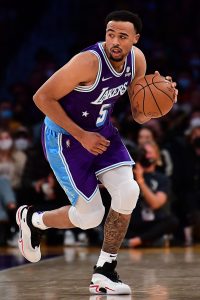 If Westbrook is off the table, that leaves Talen Horton-Tucker and Kendrick Nunn as Los Angeles’ most logical trade chips. They’re the only players on the roster earning more than the minimum salary and less than the max. Together, Horton-Tucker ($9.5MM) and Nunn ($5MM) could bring back a player earning a little over $18MM.
If Westbrook is off the table, that leaves Talen Horton-Tucker and Kendrick Nunn as Los Angeles’ most logical trade chips. They’re the only players on the roster earning more than the minimum salary and less than the max. Together, Horton-Tucker ($9.5MM) and Nunn ($5MM) could bring back a player earning a little over $18MM.
A year ago, attaching a future first-round pick to those two players would’ve made for a pretty tantalizing package. But the shine has come off Horton-Tucker now that he’s on a more expensive contract and hasn’t taken a step forward in his third NBA season. Nunn, meanwhile, has yet to play at all this season due to a knee injury.
Horton-Tucker is still just 21 years old, Nunn is a solid player when he’s healthy, and that 2027 first-rounder holds intrigue because no one knows what the Lakers will look like five years from now. However, L.A. will be competing with other buyers who will be able to offer stronger packages for higher-end trade candidates.
Whether or not they can make a bigger deal, I’d expect the Lakers to try to at least make a smaller trade or two, moving off minimum-salary players such as DeAndre Jordan and/or Kent Bazemore.
Phoenix Suns
Trade deadline goals:
Like the Warriors, the Suns aren’t under any real pressure to make a move at the deadline. Their 42-10 record so far this season is the NBA’s best, and there are no obvious holes in their regular rotation.
Still, the Suns will likely be on the lookout for one more wing who can knock down three-pointers. Offseason acquisition Landry Shamet is shooting a career-worst 35.3% on threes and there’s no guarantee that stretch four Dario Saric will return from his ACL tear in time to provide any help this spring. Shoring up the rotation with one more shooter would give Phoenix some added peace of mind entering the postseason.
Top trade candidates:
Saric’s injury makes him a trade candidate for salary-matching purposes. Among Phoenix’s highest-paid players, the Croatian forward and his $8.5MM cap hit are the most expendable. Of course, it’s worth noting that Saric is also under contract for $9.2MM next season, which may turn off some teams, especially since there’s no guarantee he’ll be back to 100% following his ACL tear.
Second-year center Jalen Smith would be a more interesting trade candidate if the Suns had exercised his $4.7MM option for 2022/23. Because they turned it down, whichever team has Smith on its roster at the end of the season won’t be able to offer him a starting salary higher than $4.7MM when he reaches free agency. In other words, there’s little incentive for a club to take a flier on him, since if he plays well down the stretch, he might price himself off that club’s roster.
Other veterans who aren’t vital rotation pieces, such as Elfrid Payton, Frank Kaminsky, or Abdel Nader, would presumably be available. The Suns also have a fair amount of draft-pick flexibility — they own all their own second-round picks and could offer any future first-rounders starting in 2024.
Sacramento Kings
Trade deadline goals:
There have been mixed messages out of Sacramento in the weeks leading up to this year’s trade deadline. After signaling last summer that they weren’t interested in moving De’Aaron Fox or Tyrese Haliburton, the Kings seemed to become more receptive to the idea after getting off to a terrible start this season, with multiple reports indicating no one was off-limits.
 However, last month, the Kings reportedly recommitted to the idea of building around Fox and Haliburton and told Fox they don’t want to move him.
However, last month, the Kings reportedly recommitted to the idea of building around Fox and Haliburton and told Fox they don’t want to move him.
While Haliburton may legitimately be off the table, rival teams are skeptical that Fox is actually untouchable. And it’s safe to assume anyone else on the roster could be had. The Kings badly want to end a playoff drought that has lasted a decade-and-a-half (and counting) and appear prepared to shake up their roster this week to try to make it happen.
Even at 20-35, Sacramento is just two games out of a play-in spot, so we shouldn’t necessarily assume the team is focused on next season quite yet. I expect the front office will be focused on making adjustments to the mix of players on the roster, not simply selling off veterans for draft assets.
Top trade candidates:
Even if the Kings ultimately decide not to move Haliburton and Fox, there are a ton of trade candidates on the roster.
Buddy Hield, Harrison Barnes, Richaun Holmes, and Marvin Bagley III are a few of the players whose names have frequently popped up in trade rumors this season. Barnes and Holmes, in particular, should be intriguing targets for rival teams. Barnes is a solid defensive player who is making over 40% of his three-pointers this season, while Holmes is the kind of rim-running center who would look good in Charlotte or Toronto — both players are on very reasonable multiyear contracts.
It will be more challenging for the Kings to get a positive return for Hield or Bagley. Hield’s ability to stretch the floor is his calling card, but his 36.8% mark on three-pointers this season is easily the worst of his career and he’s owed another $40MM for the next two years after earning $23MM this season. Bagley, meanwhile, still hasn’t delivered on the promise that made him the No. 2 overall pick in 2018 and he’ll be a free agent this summer.
Tristan Thompson, Alex Len, Damian Jones, and Maurice Harkless are among the other veterans the Kings could move, though some will have more value – both to Sacramento and to trade partners – than others. Youngsters Robert Woodard and Jahmi’us Ramsey also haven’t shown much yet and should be available, but they may not generate much interest.
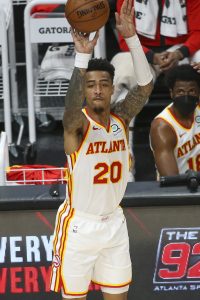 Finding a logical trade target is trickier. The Hawks have been linked to
Finding a logical trade target is trickier. The Hawks have been linked to 
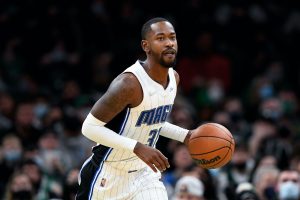 Veteran wings
Veteran wings 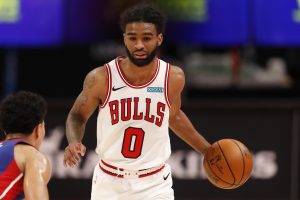
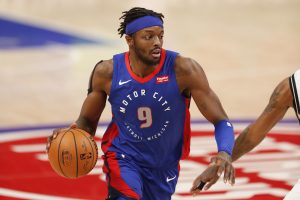
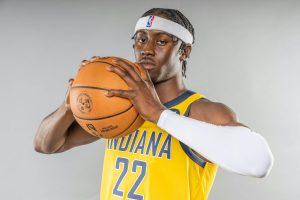 Indiana’s asking price for Sabonis is said to be very high, and Turner’s lingering foot injury muddles his trade value. It’s certainly not out of the question that one of the centers will be on the move, but I don’t get the sense the odds are better than 50/50 at this point.
Indiana’s asking price for Sabonis is said to be very high, and Turner’s lingering foot injury muddles his trade value. It’s certainly not out of the question that one of the centers will be on the move, but I don’t get the sense the odds are better than 50/50 at this point.

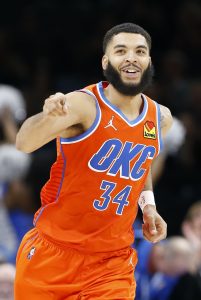 While the Thunder could be satisfied to take on unwanted contracts and the draft picks that come along with them, they also could shop two or three of their veterans, if they so choose.
While the Thunder could be satisfied to take on unwanted contracts and the draft picks that come along with them, they also could shop two or three of their veterans, if they so choose.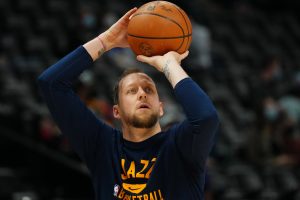 Ingles has been lauded for years for his impact both on the court and in the locker room. However, he became a trade candidate this year due to his expiring contract and his declining production. Unfortunately, a season-ending ACL tear makes him even more expendable — he won’t be able to play again before his contract expires, so his $13MM salary represents a logical matching piece for the Jazz.
Ingles has been lauded for years for his impact both on the court and in the locker room. However, he became a trade candidate this year due to his expiring contract and his declining production. Unfortunately, a season-ending ACL tear makes him even more expendable — he won’t be able to play again before his contract expires, so his $13MM salary represents a logical matching piece for the Jazz.

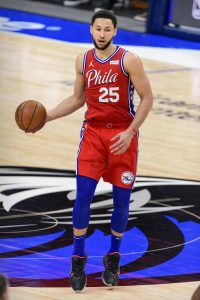 It may seem like managerial malpractice to not take the best offer available for Simmons in order to immediately upgrade a roster that could be a serious threat to come out of a wide-open East. But the 76ers want to make sure they maximize the value of their best available trade chip and make themselves contenders for years to come, rather than chasing short-term success.
It may seem like managerial malpractice to not take the best offer available for Simmons in order to immediately upgrade a roster that could be a serious threat to come out of a wide-open East. But the 76ers want to make sure they maximize the value of their best available trade chip and make themselves contenders for years to come, rather than chasing short-term success.